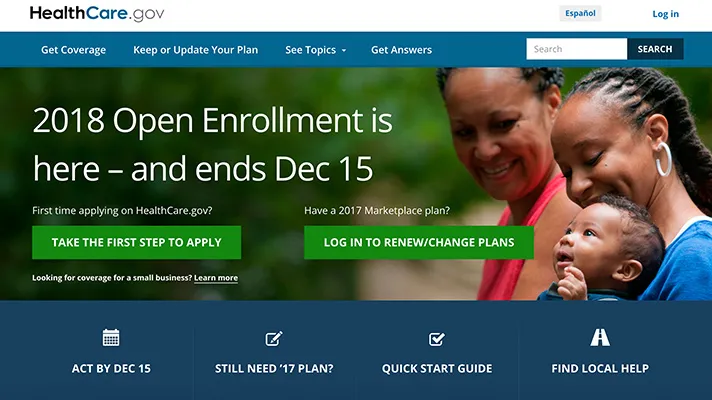
An estimated 11.8 million consumers enrolled in Affordable Care Act plans for 2018, compared to 12.2 million in 2017 and 12.7 million in 2016, when the numbers were at an all-time high.
The Centers for Medicare and Medicaid Services called the 2018 open enrollment its most cost effective and successful to date, as CMS slashed the promotional budget for the ACA, cut navigator funding used by community organizations to help consumers select plans and shortened the enrollment period, while keeping enrollment numbers high.
Healthcare.gov used only 22.5 hours of regular maintenance time, the lowest ever, while data from the Federal Health Insurance Exchange call center shows consumer satisfaction rate remained at an all-time high – averaging 90 percent – compared to 85 percent last year.
CMS said it adjusted the open enrollment marketing budget to a level consistent with advertising spending for Medicare. The agency spent $10 million on marketing and outreach, which is just over $1 per Healthcare.gov enrollee, compared to $100 million and $11 per enrollee last year.
The 11.8 million consumers who selected or who were automatically re-enrolled in Affordable Care Act for 2018 included 8.7 million consumers in the 39 states using Healthcare.gov and 3 million in the state-based exchanges, CMS said in Tuesday's announcement of the final enrollment figures for 2018.
The report shows that nearly three quarters actively shopped for a policy versus letting their policy automatically renew.
Of consumers who selected plans, 27 percent were new enrollees and 47 percent actively returned to select a plan, CMS said.
Most consumers, 63 percent, selected a silver plan. Twenty-nine percent selected bronze and 7 percent chose gold. The percent of bronze plan selections was up by 6 percent and the percent of silver plan selections was down 9 percent compared to last year, CMS said.
The share of individuals 55 years of age and older enrolled in Healthcare.gov increased from 27 percent last year to 29 percent this year, whereas the share of young adults between the ages of 18 and 34 decreased slightly.
Unsubsidized monthly premiums continued to rise for Healthcare.gov consumers, from $476 last year to $621 this year, an increase of 30 percent, CMS said.
Most consumers relied on premium subsidies to purchase coverage. Approximately 83 percent of consumers nationwide had their premiums reduced by tax credits, CMS said.
The average tax credit through Healthcare.gov covered about 86 percent of the total premium, resulting in an average premium after tax credits of $89 per month.
"Taken together these data suggest that more affordable healthcare options are needed. Especially for those forgotten women and men who are not eligible to have their premiums reduced by tax credits," said CMS Administrator Seema Verma.
This includes short-term duration plans recently established by CMS, she said.
"Our primary goal this year was to ensure that Americans who wanted coverage through the exchange had a seamless experience," Verma said. "We are pleased that consumer satisfaction was the highest it's ever been during the 2018 open enrollment period. However, even with the success of this year's open enrollment, the individual market continues to see premiums rise and choices diminish. Average individual market premiums have more than doubled since 2013 compared to health plans on the exchange in 2018, and half of U.S. counties have had only one issuer to choose from this year."
Twitter: @SusanJMorse
Email the writer: susan.morse@himssmedia.com